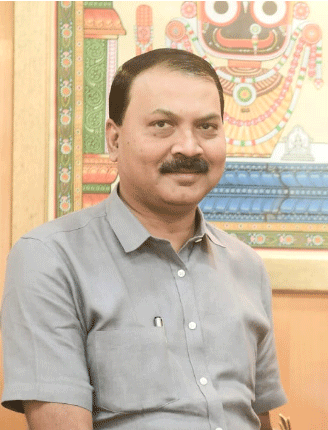Bhubaneswar: The Sahitya Akademi, New Delhi, in collaboration with Odisha Sahitya Akademi, is organizing a two-day Seminar on Saora Language Convention here from April 22.
The Convention will be held here at Conference Hall, Sanskruti Bhavan, Odisha Sahitya Akademi. Additional Chief Secretary, Odia Language Literature & Culture, Satyabrata Sahu will grace the inaugural function as Special Guest while Hrushikesh Mallick, the President of Odisha Sahitya Akademi will be Chief Guest.
Madhav Kaushik, President, Sahitya Akademi will deliver the presidential address. Culture Director Ranjan Kumar Das, eminent linguists Gourahari Das and Debi Prasanna Pattanayak will participate in the conference.
Scholars, folklorists, Artists, Saora writers on Saora literature, and cultural resource persons from West Bengal, Assam, Odisha, Andhra Pradesh, and other parts of the country will participate in this seminar.
Themes like the history of the Saora people, their cultural tradition and transition, oral tradition, and their belief narratives will be discussed in various sessions during April 22- 23, 2023.
The Saora, also known as Savara and Sawra, is one of the ancient indigenous people of middle eastern India. There are many Savaras in India. They are Lanjia Saora and Suddha Saora in Odisha; Jara Savara, Malia Saora, and Lanjia Saora in Andhra Pradesh, and Khedia Savara and Lodha Savara in West Bengal; and Patra Saora in Dhenkanal, Bolangir, Kalahandi and other parts of Odisha.
Descriptions of Savara are found in the Sanskrit epics, the Ramayana, and the Mahabharata. They are the indigenous inhabitants of the Vindhya Mountain range and India’s Mahendra-eastern Ghat mountain range.
The Savara is Lord Jagannath’s originator, Odisha’s State Deity. The Savara is described in the Sanskrit texts, Buddhist Charyapada, ancient Odia myths, and epics of Odisha.
The mystic and esoteric cult, the transformation of the soul from one body to the other, is popularly known as “Savari Vidya-“the esoteric knowledge intimately known to originate from the religious practices of the Savaras.
The housing pattern, terrace cultivation, traditional soil conservation system, dress and ornaments, musical instruments, and war dance are some of the cultural symbols distinguishing them from the other indigenous people.
The Saora have an integrated worldview corresponding to their environment, society, culture, and the cosmos. They attach importance to nature, animate and inanimate; both are tied in a string of independency reflected in their myths, folktales, and riddles.
They find spirituality in the snakes, reptiles, lizards, monkeys, cockroaches, and many other creatures, believing that the ancestor spirit might appear before them in any form. If they do not worship them, they may feel offended, and that will cause harm to them because of negligence in duties toward their ancestors and gods.
The ancient temples of Lord Shiva, demigod Bhima, and Kunti temple on the hilltop of Mahendragiri are sacred, qualifying the origin place of the Saora. The twelve clans of Saora originated from the twelve villages-Barataria. The association of Saora with these temples signifies their close link with the tradition of ancient Hinduism.
The migration of Saora people to other parts of the country and forming a diaspora in Assam, Arunachal Pradesh, Nagaland, and West Bengal claims their Saora diaspora manifested in literature. While they migrate and have a new settlement, they maintain their identity through their language, literature, and cultural symbols that assert their distinct existence.
This seminar aims to discuss the trajectory of their civilization and understand the processes of maintaining cultural identity in inclusion and mobility.


